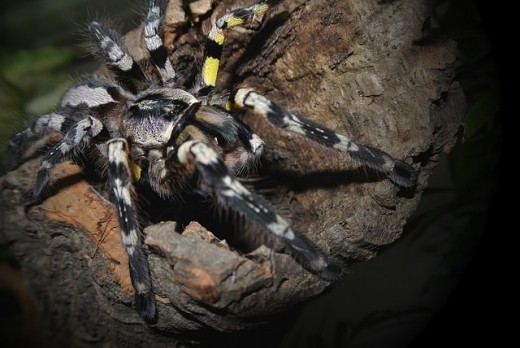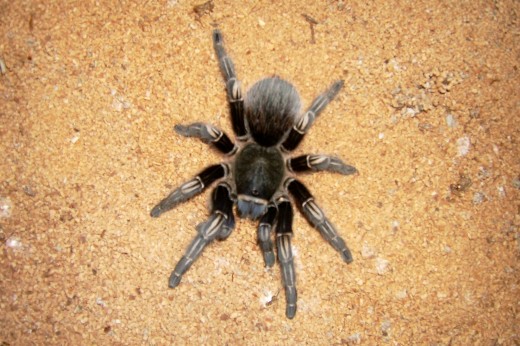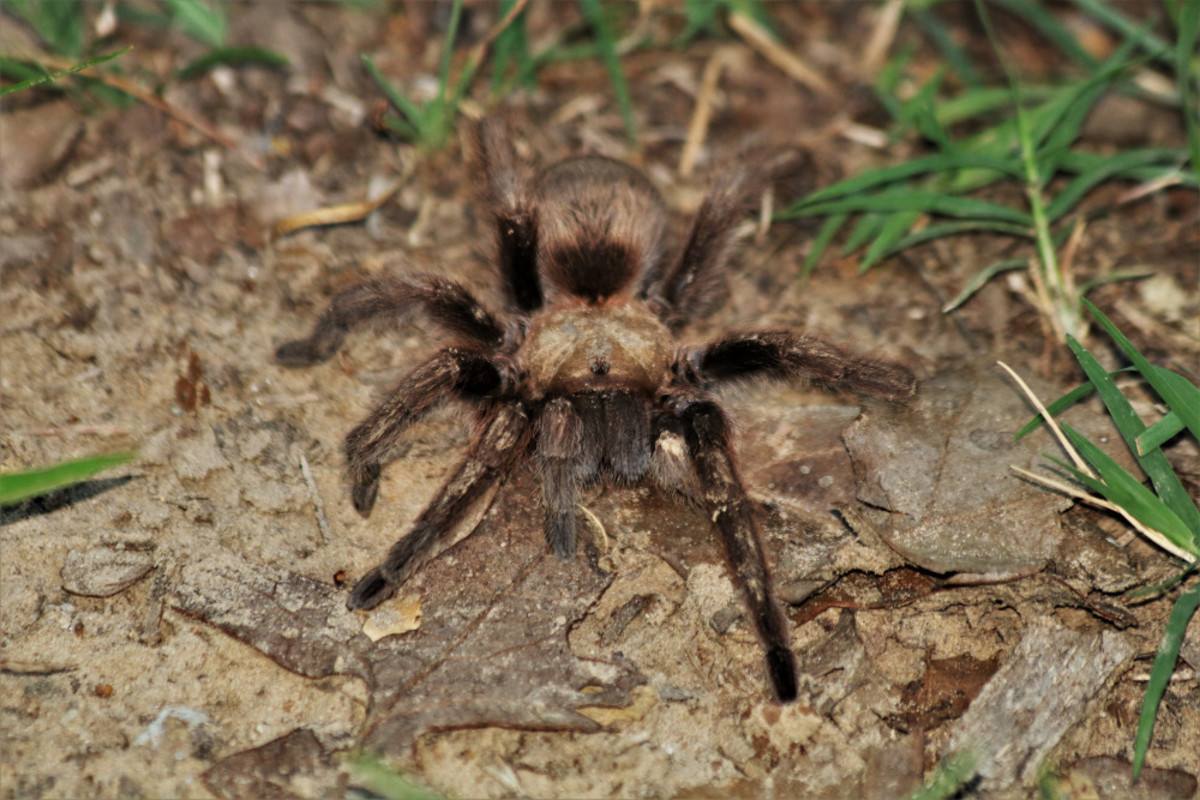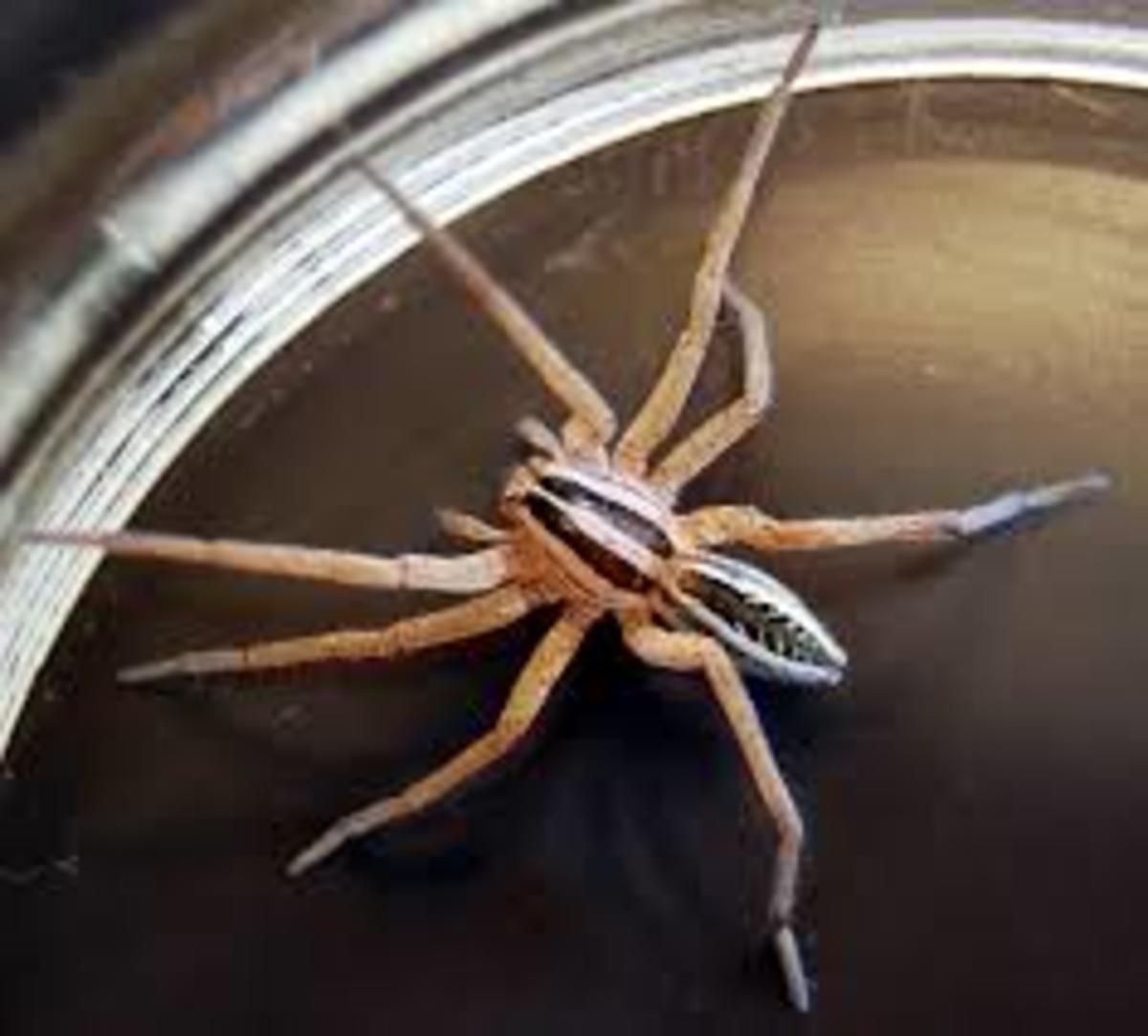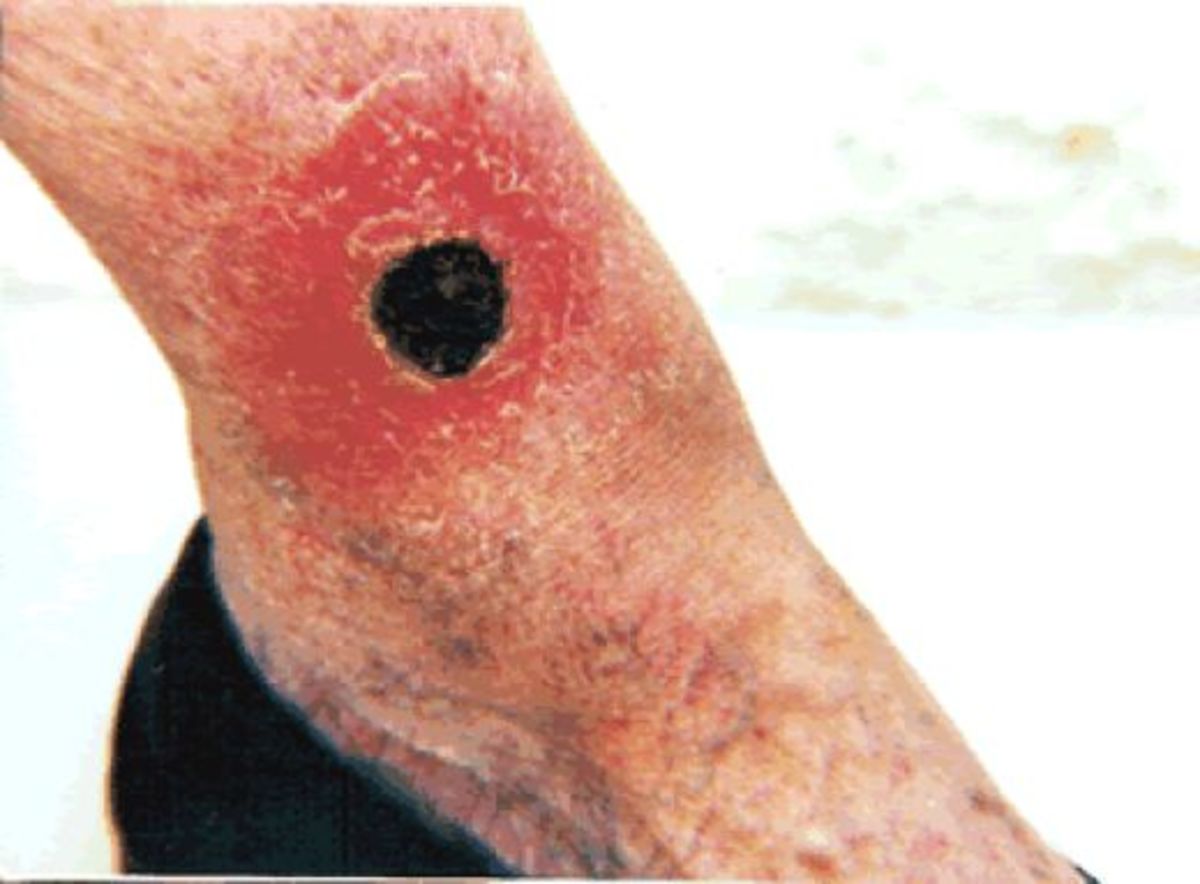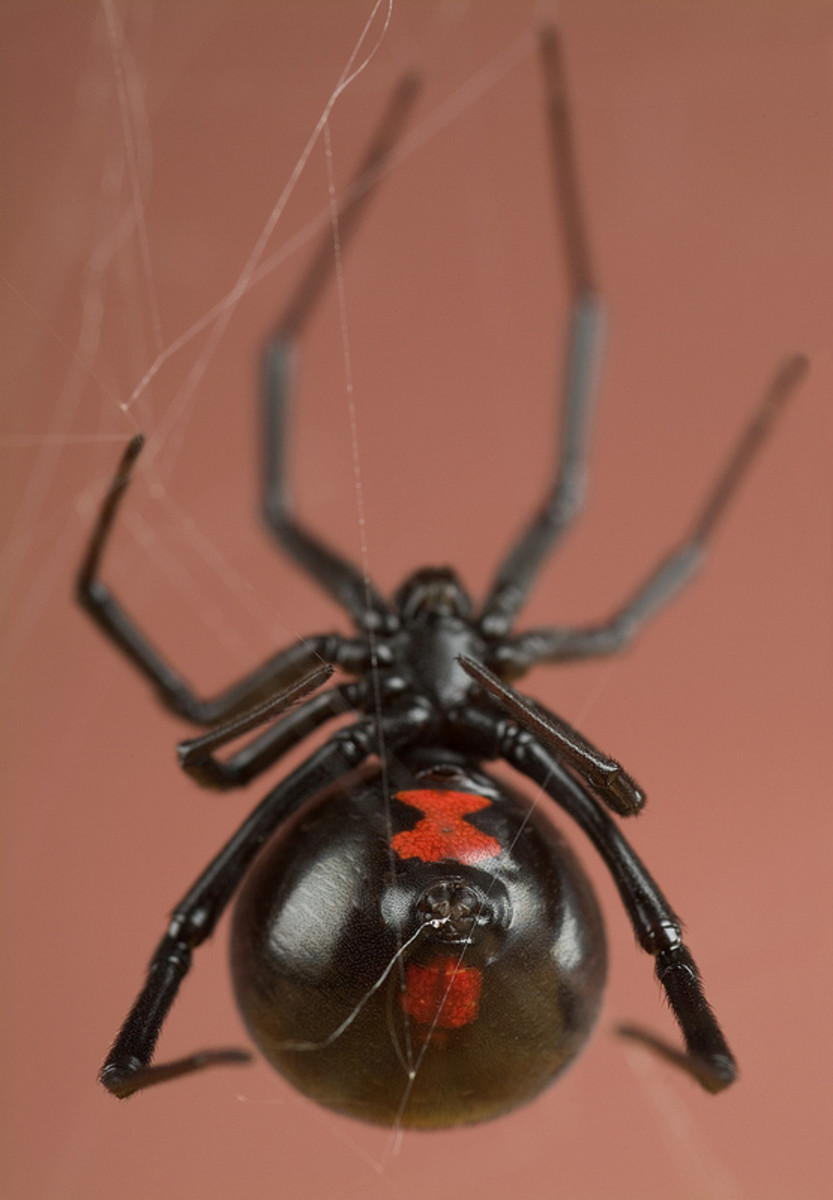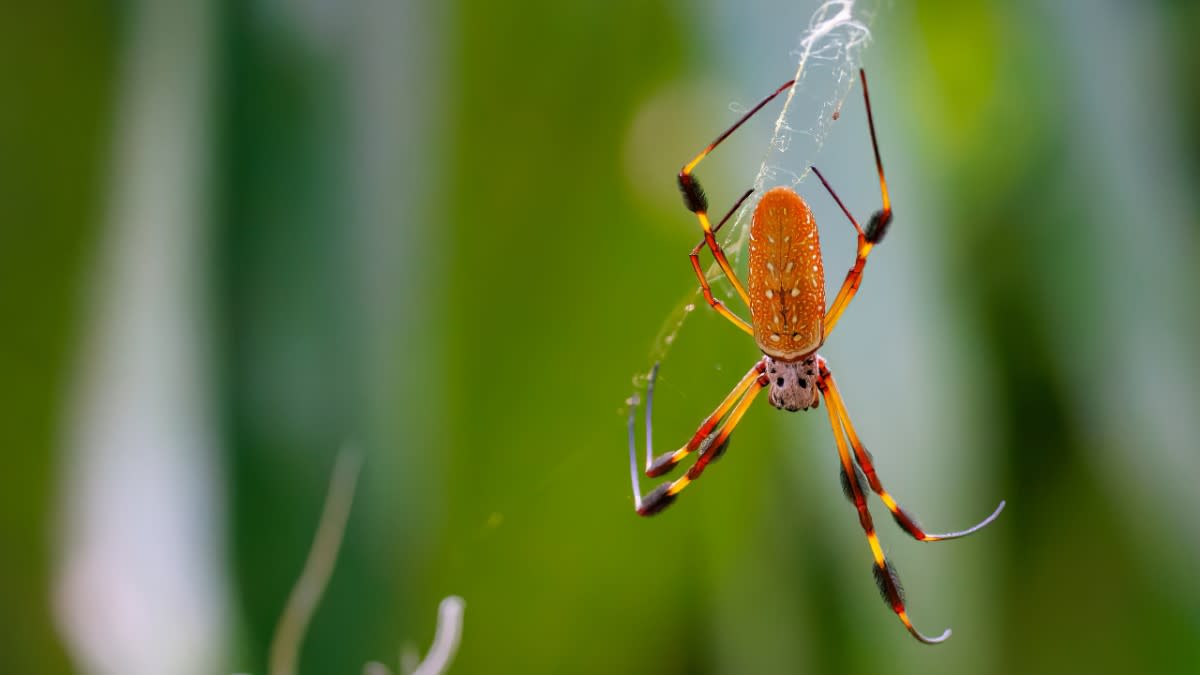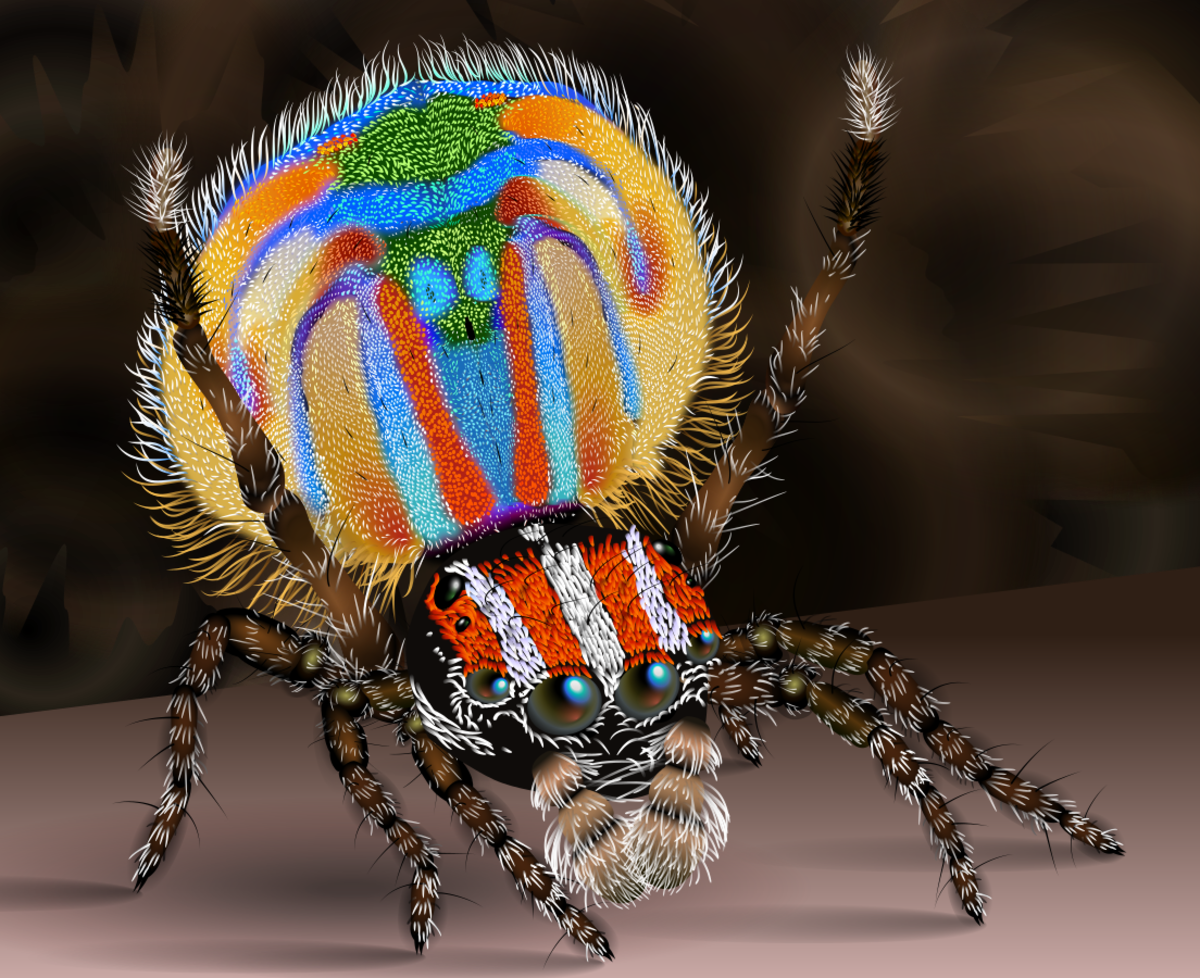- HubPages»
- Education and Science»
- Life Sciences»
- Entomology»
- Spiders & Arachnids
Tarantula
Family Theraphosidae
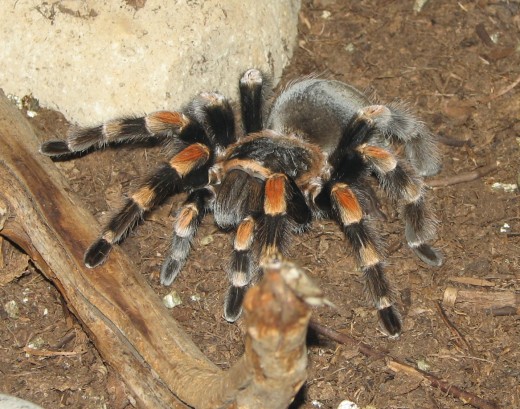
Description
If you think if a big hairy Spider the one you will think of is the Tarantula. They have more hair than other species and it helps to give them a very rough look. Then they are less likely to be bothered by predators. However, it also gives them a bad image in the minds of humans too.
In areas of Africa this Spider is typically called the Baboon Spider. They will trap it though and eat it due to the long limbs it features. The males are about 8 inches when full grown and the females are about 12 inches. The limbs are thicker than other species of Spiders. They also are higher off the ground with the core of the body.
Facts about Spiders
- Spider Facts and Information
Spider Facts and Information. Feeding, habitat, distribution, reproduction, anatomy and more. Facts about the Brown Recluse Spider, Tarantula, Camel Spider, Wolf Spider, Black Widow Spider and many others. - Amazing Animal Facts
Interesting Animal Facts - The Portal of Animal Diversity. Visual index of animals. Dolphins, Whales, Penguins, Sharks, Tigers, Elephants, Flamingos, Otters, Killer Whales, Seals, Sea Lions, Sea Turtles, Polar Bears, Walruses, Squids, Manatees, Snail
Behavior
Even though stories continue to manifest about aggressive Tarantula attacking people it really doesn’t happen like that. They are very timid and will try to get away from danger when they can. Should the feel they need to stand their ground they will lift front limbs off the ground as if they were going to charge. They can hold that stance for a very long period of time though.
They do so in the hopes that whatever is around them will run off. They do become aggressive with each other though for mating. The males love to be the one to entertain the females but first they have to work hard to eliminate the competition. Even these incidents though rarely end with physical conflict occurring.
They don’t create a web like so many other Spiders so that is different. Instead they create burrows where they will line silk from their bodies. This makes it very fast for them to get in and out of that burrow with ease. Yet it keeps insects and other intruders in there that have ventured around and they can’t get back out.
Some people believe that this Spider hibernates in the winter. That isn’t true but they are able to reduce their metabolism. As a result they have to hunt for food less frequently. They may remain in one place for a long time too. This allows them to conserve energy.


Dangerous Animal Facts
- Snake Facts and Information
Sanke Facts and Information. Feeding, habitat, distribution, reproduction, anatomy and more. Facts about the King Cobra, the American Copperhead, the Black Mamba and the Corn Snake among others and the conservation efforts made to preserve snakes. - Scorpion Facts and Information
Scorpion Facts and Information. Feeding, habitat, distribution, reproduction, anatomy and more. Facts about the Arizona Bark Scorpion, the Deathstalker Scorpion, the Emperor Scorpion, the Fattail Scorpion. Scorpions and Humans like venom research and
Habitat and Distribution
The name Tarantula is one of the most common misspelled words when it comes to Spiders. The spelling definitely is very different from how it sounds. The word comes from Italy as this was the first place that these Spiders were located. Today they still inhabit a great deal of that area. They are also found around the USA and into Mexico.
The severity of the venom differs by location. Experts believe this has to do with their survival needs. It also has to do with the food they will consume there. Those found in the USA have the least potency in terms of the venom than those found elsewhere.
Most of the time these Spiders try to stay well hidden. Yet they do surface for mating. They also come out and are exposed when they are looking for warmer places. The end of summer is usually when people start to see them in motion.
Diet and Feeding habits
For the Tarantula there is no intricate web to create. They do produce silk though but many people think that they don’t. They will go out and hunt for the food that they want. This requires plenty of skill and lots of waiting around. They find a great hiding spot and then they will jump out when they find something. They get the prey most of the time due to the surprise factor.
Some of the food sources for the Tarantula include rodents, birds, lizards, and insects. They feed frequently but there may be days when they don’t end up with any food at all. The venom is very dangerous and it will turn the insides of the prey into a liquid substance that they consume. Sometimes the hairs from the Spider can irritate the prey too. Then they will have their air cut off due to the swelling along the air passage.
More Animal Facts...
- Cheetah Facts
The cheetah (Acinonyx jubatus) is the fastest land animal. It inhabits most of Africa and parts of the Middle East. - Facts about Crocodiles, Alligators, Caymans
Crocodile. Alligator and Caiman Facts and Information. Feeding, habitat, distribution, reproduction, anatomy and more. Facts about the Nile Crocodile, the Saltwater Crocodile, the Black Caiman, the American Alligator among others and the conservation - Hummingbird Facts and Information
Hummingbird Facts and Information. Feeding, habitat, distribution, reproduction, anatomy and more. Facts about the Anna's Hummingbird and the Rufous Hummingbird, Violet-headed Hummingbird and others
Reproduction
Most Tarantula die within a year after mating. It is all part of nature’s play. Yet some of them won’t mate until they are 5 years or 10 years of age. It often depends on the species as well as on the location of them. Experts are very fascinated by this and they continue to investigate it. This is very unique of Spider species.
Females are extremely picky when it comes to mating with a male. They may have several come along that they aren’t interested in. If they won’t leave when she tells them to, they may become a meal for her.
The males try to woe the female by doing various rituals. They may include offering her food, dancing, and rubbing areas of her limbs with his own. If she is ready to mate he can produce sperm that she will take from him. She will use it to create her young into the egg sacks. She may eat him too after she is done so he better get moving while she is busy with the eggs!
It is amazing that this Spider can produce up to 2,000 eggs at a time. She will create protective sack for them with silk from her body. She will also protect them aggressively to prevent them from being harmed. This is the time of year when humans have the largest risk of being bitten by a Tarantula.
Venomous Bite or Danger to Humans
Some people don’t think all Tarantula are venomous because they have been bit and it was no big deal. That is often the case but there are also those that are very powerful and the bite will hurt a great deal. You want to wash the area to reduce the risk of the hairs being a bother. They can cause swelling and inflammation for you.
Should you be an owner of such as Spider as a pet you need to handle it with care. Even if you have owned it for years it can bite you. Always put on gloves before you handle it. This will help to reduce the chances of your skin becoming irritated by those hairs.
Tarantula Video
Bite Treatment or Care
If the bite is very painful you should talk to your doctor. They can offer you medication to help reduce the pain. If it is red and inflamed you may need mediation to prevent your airways from being smaller than normal.
Any time the skin is irritated by the hairs or they get into the eyes it can cause problems. You may be referred to an eye specialist who is trained to remove such small objects out of the eyes. Not all doctors feel comfortable doing this type of task. Many people experience fatigue and aches after such a bite.
If the Tarantula bites close to a joint then symptoms similar to those of arthritis can develop. They can linger for many years and often come and go. If the pain is intense or you have a weak immune system a regiment of steroids may be followed for a couple of weeks. It is a good idea to get a Tetanus shot as well if you don’t have one that is current.

